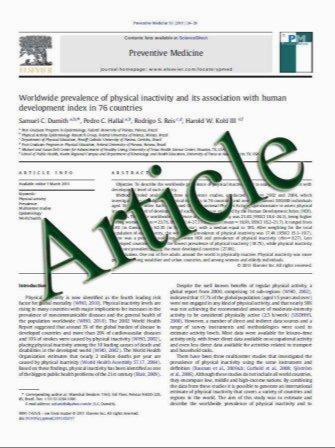The Clinical Usefulness of 18F-FDG PET/CT in Patients with Systemic Autoimmune Disease
- نوع فایل : کتاب
- زبان : انگلیسی
- مؤلف : Jong-Ryool Oh & Ho-Chun Song & Sae-Ryung Kang & Su-Woong Yoo & Jahae Kim & Ari Chong & Jung-Joon Min & Hee-Seung Bom & Shin-Seok Lee & Yong-Wook Park
- چاپ و سال / کشور: 2011
Description
Purpose Individuals with systemic autoimmune disease have an increased susceptibility to both inflammation and malignancy. The aim of this study was to evaluate the clinical usefulness of 18F-FDG PET/CT in patients with systemic autoimmune disease. Methods Forty patients diagnosed with systemic autoimmune disease were enrolled. Diagnostic accuracy of FDG PET/CT for detecting malignancy was assessed. FDG PET/ CT findings, including maximum standardized uptake (SUVmax) of lymphadenopathy (LAP), liver, bone marrow, spleen, joint and muscles, were considered for the characterization of LAPs. Results FDG PET/CT could detect metabolically activated lesions in 36 out of 40 patients (90%) including inflammatory lesions in 28 out of 32 patients (88%). The sensitivity, specificity, accuracy, positive predictive value, and negative predictive value of FDG PET/CT for the detection of malignancy were 100, 67, 70, 25, and 100%, respectively. Multiple LAPs were found in 25 of 40 patients (63%), and comprised three malignancies, four cases of tuberculosis, and 18 reactive changes. A SUVmax ratio of bone marrow to liver below 0.78 could distinguish malignancy from tuberculosis + reactive change (AUC=1.000, sensitivity: 100%, specificity: 100%). The SUVmax ratio of spleen to liver in the reactive group was also significantly higher than that in the malignancy group (P=0.014). SUVmax of LAP in the TB group was significantly higher than that in the reactive group (P=0.040). Conclusions PET/CT is useful in detecting and differentiating inflammation and malignancy in patients with systemic autoimmune disease. Frequent false-positive interpretations can be minimized by consideration of FDG uptake in bone marrow and spleen.
Nucl Med Mol Imaging DOI 10.1007/s13139-011-0094-8 Received: 26 April 2011 / Accepted: 22 June 2011


